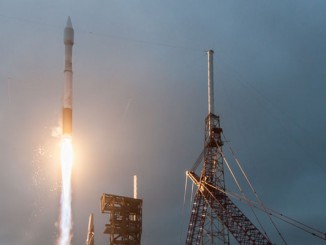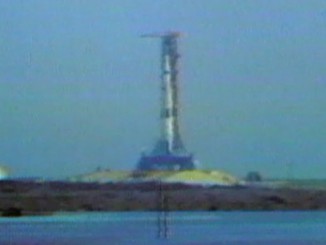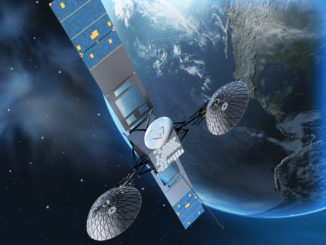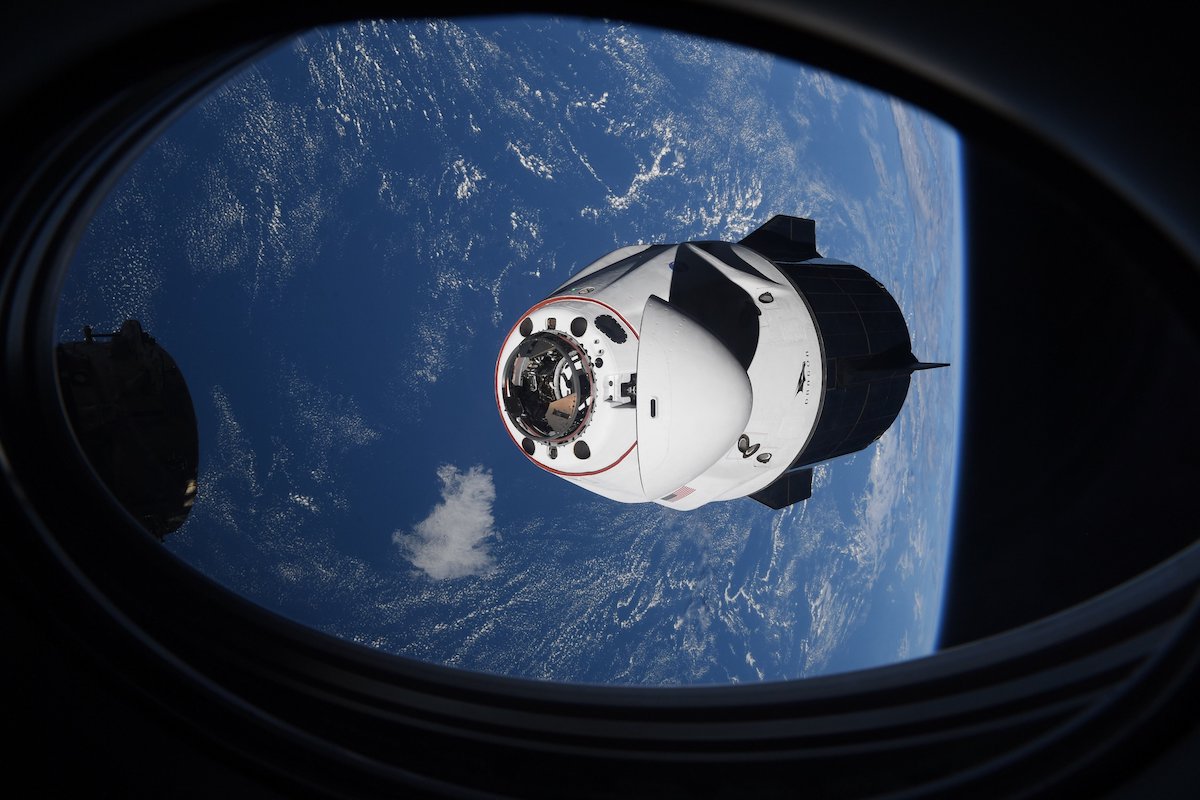
A refurbished SpaceX Crew Dragon spaceship linked up with the International Space Station early Saturday more than 260 miles above Earth, delivering four veteran astronauts to the orbiting research complex and temporarily raising the lab’s crew complement to 11.
It has been 10 years since the space station hosted so many people, even for a short time. The fresh astronauts that arrived in SpaceX’s Crew Dragon Endeavour spacecraft Saturday are replacing four outgoing space station residents scheduled to come back to Earth as soon as Wednesday in another Crew Dragon capsule.
The automated docking of the Crew Dragon Endeavour spacecraft at 5:08 a.m. EDT (0908 GMT) Saturday marked the third arrival of astronauts at the space station inside a SpaceX capsule in 11 months.
NASA commander Shane Kimbrough, pilot Megan McArthur, Japanese astronaut Akihiko Hoshide, and French-born European Space Agency mission specialist Thomas Pesquet were strapped inside Crew Dragon Endeavour for the docking. Wearing their white SpaceX-made pressure suits as a precaution, the astronauts monitored the capsule’s autonomous final approach on touchscreen display panels.
A few hours later, after leak checks of the passageway between the Dragon and the space station, astronauts opened hatches to allow Kimbrough and his team of “Crew-2” astronauts to float into the research outpost. NASA astronaut Shannon Walker, commander of the space station’s Expedition 65 crew, welcomed the Dragon astronauts aboard the complex.
“We have an 11-person scrum here, with four countries represented,” Hoshide said in remarks during a welcome ceremony Saturday for the Crew-2 mission.
Crew Dragon Endeavour commander Shane Kimbrough, pilot Megan McArthur, and astronauts Akihiko Hoshide & Thomas Pesquet have floated into the International Space Station after docking this morning.
There are 11 people on the station for the next few days.https://t.co/0HePzFvccZ pic.twitter.com/0myAANWizA
— Spaceflight Now (@SpaceflightNow) April 24, 2021
Walker will hand over command of the space station to Hoshide next week, setting the stage for her return to Earth on Wednesday on SpaceX’s Crew Dragon Resilience spacecraft. Walker launched Nov. 15 on Crew Dragon Resilience with NASA astronauts Mike Hopkins and Victor Glover, and Japanese mission specialists Soichi Noguchi.
Hopkins is commander of the Crew-1 mission, responsible for operations during the capsule’s trip to and for the space station. The Crew-1 astronauts are scheduled to depart the space station Wednesday to wrap up six months in orbit, formally handing over the research complex to the Crew-2 astronauts and a three-man U.S.-Russian crew that launched earlier this month on a Soyuz ferry ship.
The arrival of SpaceX’s Crew Dragon Endeavour spacecraft to join the Crew-1 missions Crew Dragon Resilience capsule marked the first time two SpaceX astronaut ferry ships have been docked at the space station at the same time. It’s also the first time two U.S. crew spacecraft have been at the station together.
The arrival of the Crew-2 astronauts at the space station is the third step in a four-part crew changeout this month on the orbiting research outpost.
On April 9, a Russian Soyuz spacecraft lifted off from the Baikonur Cosmodrome in Kazakhstan with two Russian cosmonauts and one NASA astronaut. They replaced an outgoing crew of two Russians and one American, who landed on their Soyuz descent craft April 17.
The return of Hopkins and his crewmates to Earth on Wednesday will end the busy stretch of crew rotations on the station. Their Crew Dragon Resilience capsule is scheduled to undock from the space station at 7:05 a.m. EDT (1105 GMT) Wednesday, followed by a deorbit burn and splashdown in the Gulf of Mexico south of Tallahassee, Florida, at 12:40 p.m. EDT (1640 GMT), weather permitting.
Until then, the crew on the space station will have to be creative in finding sleeping quarters for the 11 astronauts and cosmonauts. The station has typically had six long-term crew members at a time, but the start of SpaceX crew missions allowed NASA to raise that to a full-time staff of seven.
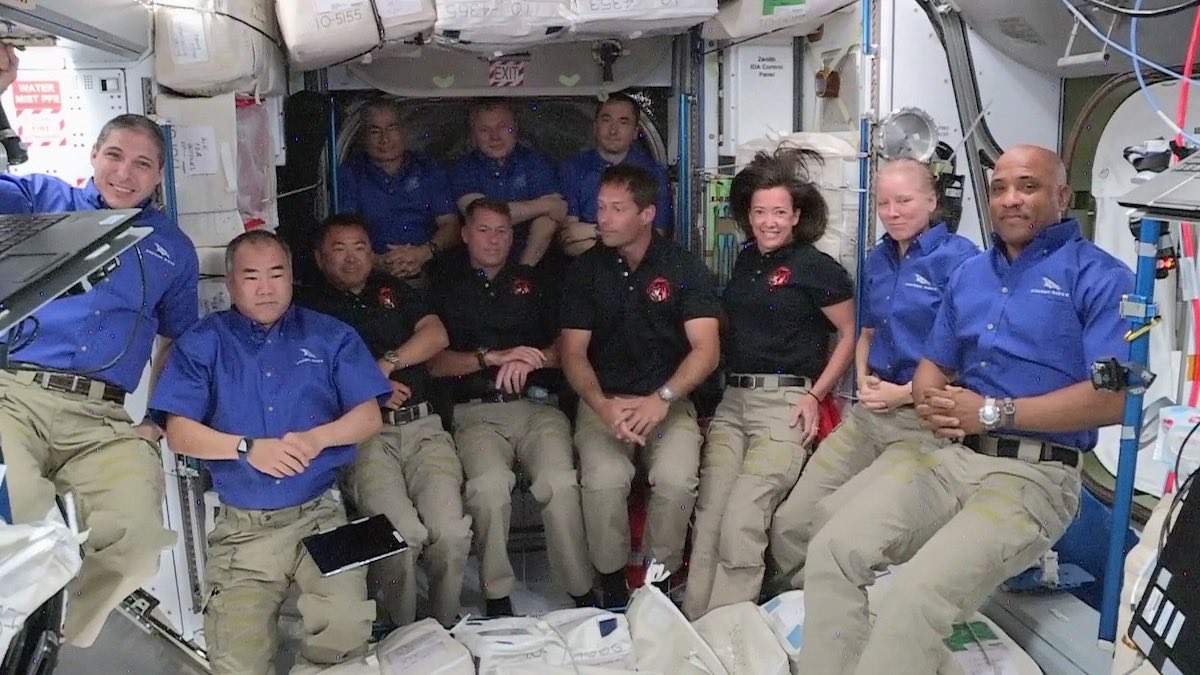
Kimbrough, a retired U.S. Army colonel and Apache helicopter pilot, leads a crew full of spaceflight veterans. The Crew-2 mission marks the third space mission in Kimbrough’s astronaut career, and the second spaceflight for pilot Megan McArthur, an oceanographer who helped repair and upgrade the Hubble Space Telescope aboard the space shuttle Atlantis in 2009.
Japanese astronaut Akihiko Hoshide is on his third trip to space, and European Space Agency mission specialist Thomas Pesquet is flying in orbit for the second time.
“We had an incredible launch,” Kimbrough said in a video downlink around two hours after liftoff Friday.
The Crew Dragon Endeavour spacecraft took off at 5:49 a.m. EDT (0949 GMT) Friday from pad 39A at NASA’s Kennedy Space Center in Florida, riding a SpaceX Falcon 9 rocket powered by a reused first stage booster.
“Right as the sun was rising, we took off. We chased the sun pretty quickly and caught up with it just a few minutes after we took off. That was pretty special to see the sunlight coming in shortly after liftoff.”
McArthur, who last flew in space nearly 12 years ago, said she was re-adapting to the sensations of microgravity.
“Hello, Earth,” she said. “It’s great to be back in space again after a few years for me. The ascent was incredible. The ride was really smooth. We couldn’t have asked for anything better. There may have been some hooting and giggling up here while all that was going on. We hope you enjoyed the show as well.”
For McArthur, whose sole previous space mission was a shuttle servicing flight to the Hubble Space Telescope in 2009, the docking Saturday was her first time to visit the 450-ton International Space Station.
“We’re just really excited to be here and be part of this historic mission, with two Dragons on-board, the first reuse of a capsule, the first reuse of a booster,” McArthur said. “It’s just a tremendous achievement on behalf of our partner SpaceX. so I want to congratulate and thank them. We’re so excited to be here. We’re ready to get to work. There’s a lot of great science that I know we’re going to be doing. We’re just excited to learn and get started.”
McArthur rode to the space station in the same seat inside the Crew Dragon Endeavour capsule that her husband, NASA Astronaut Bob Behnken, flew in on a test flight last year. SpaceX refurbished and upgraded the spaceship after it splashed down off the coast of Florida last August.
In addition to the two Crew Dragon vehicles, there’s a Northrop Grumman Cygnus cargo freighter, two Russian Progress supply ships, and a Russian Soyuz crew capsule currently docked at the space station
“The space station has changed quite a bit since the last time I was here,” Pesquet said Saturday. ‘I’ve never seen so many astronauts on-board. I’ve never seen so many different spacecraft on-board, and I think it’s a tribute to how strong the program is going.”
The Crew-2 astronauts are scheduled to live and work aboard the space station until late October, when a fresh four-person crew will fly to the complex on the next NASA-sponsored Crew Dragon mission. That mission, known as Crew-3, is scheduled for liftoff Oct. 23.
NASA has multibillion-dollar contracts with SpaceX and Boeing to fly crews to and from the space station on commercial capsules, ending the U.S. space agency’s sole reliance on Russian Soyuz spacecraft. While SpaceX is executing on its contract for at least six operational crew rotation missions, Boeing’s Starliner crew capsule has fallen behind schedule, and has not yet flown in space with astronauts.
The Crew-2 astronauts will support more than 200 scientific experiments, maintain space station systems, and help upgrade the station’s power system after the arrival of new solar panels on an unpiloted Dragon cargo capsule in early June.
Email the author.
Follow Stephen Clark on Twitter: @StephenClark1.

